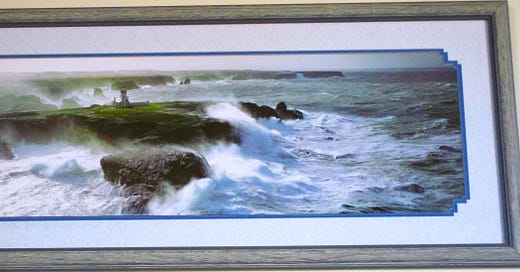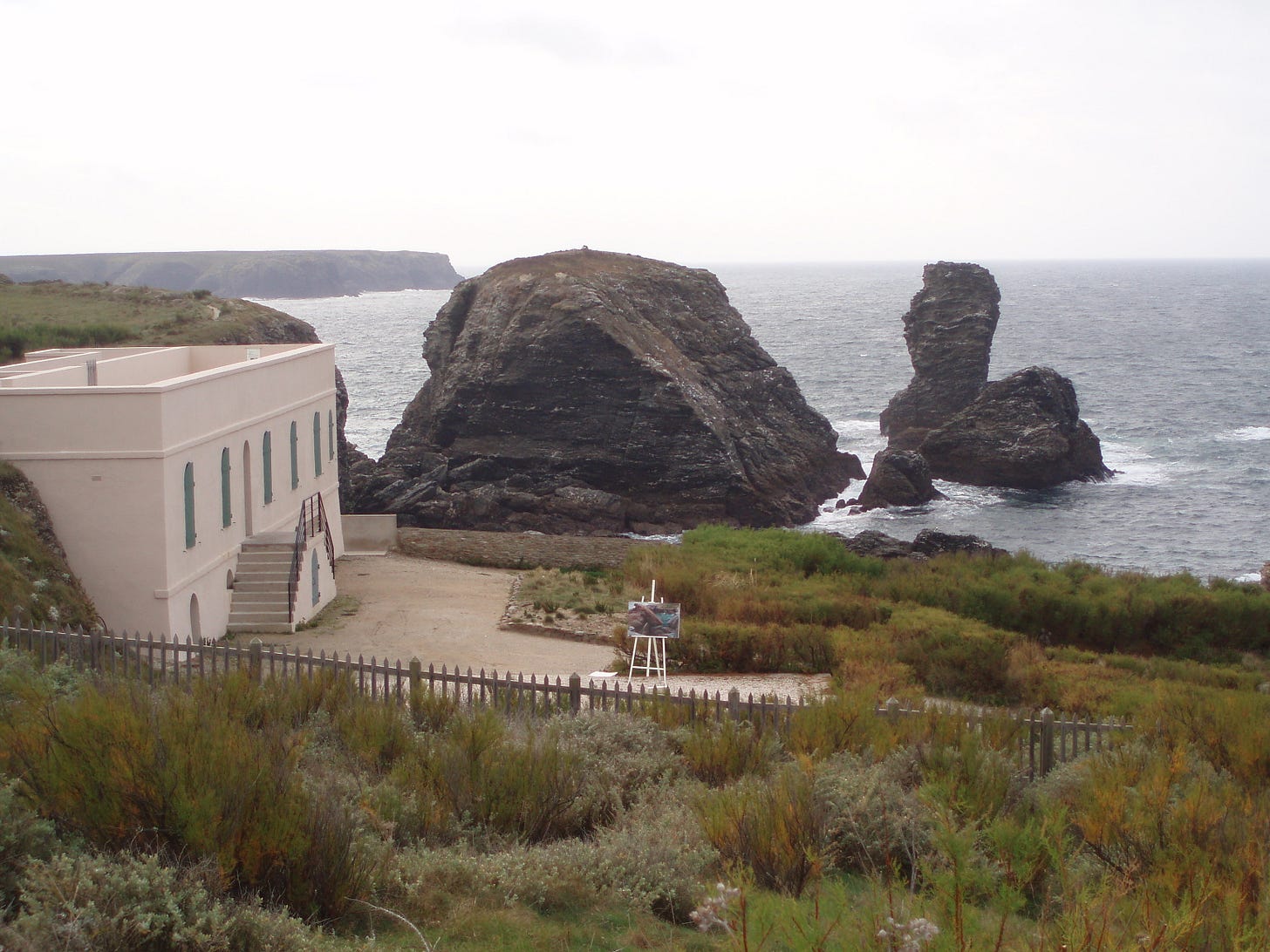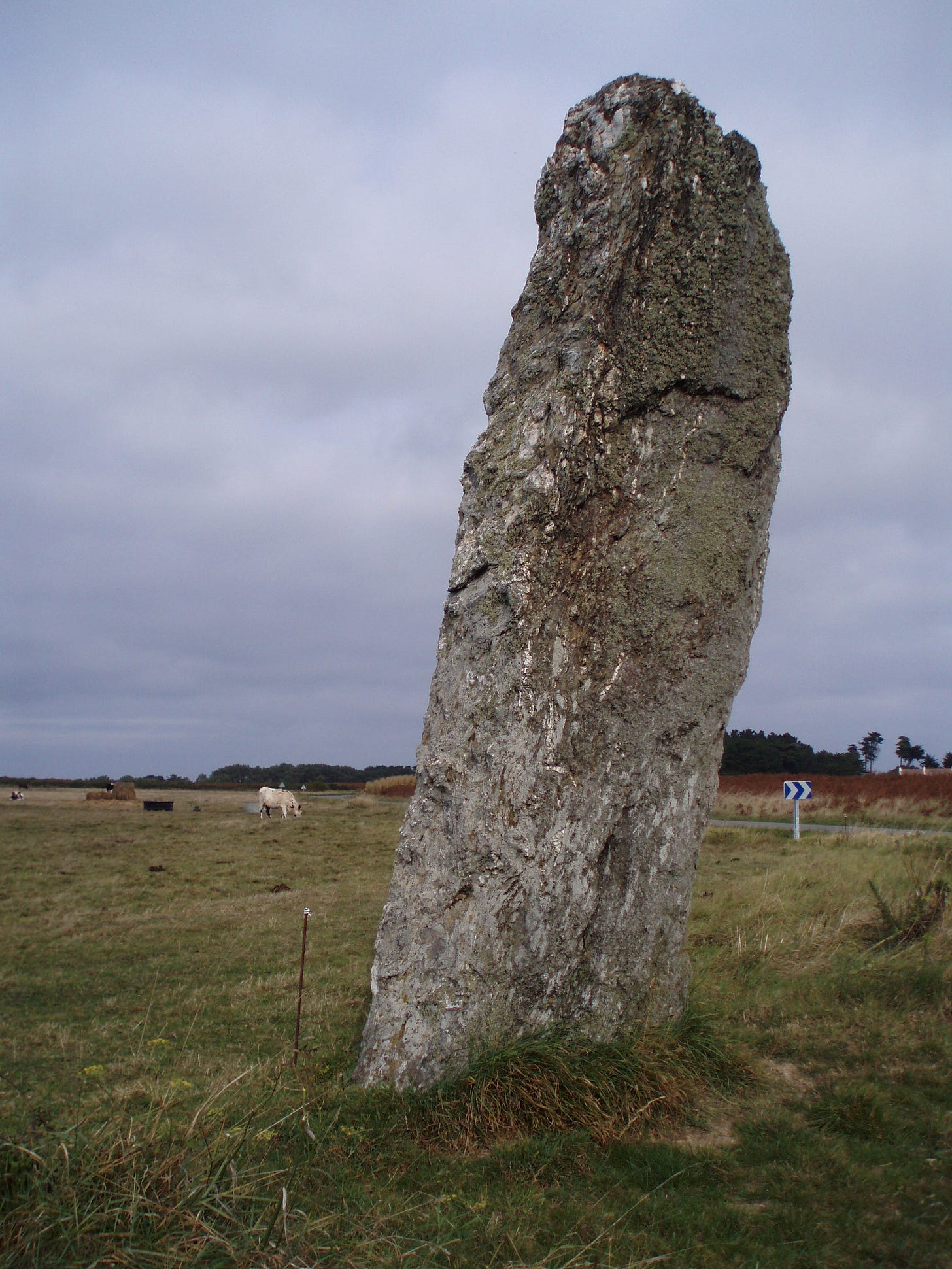I
The client settles into the couch — as much as one can settle into the uncertainty of days between “you may have cancer” and “here’s your diagnosis” — then says “I like that picture.”
Original photo by French maritime photographer Phil Plisson
It’s a photo of the storm-thrashed island of Belle–Île-en-Mer off the coast of Brittany. It’s hung within the client’s view for more than a year. Today is the day it’s seen.
“Let me tell you a little story,” I say. “I went there once and fell in love with the place. Acadians live there. Tell me what speaks to you about that scene.”
“I feel like those waves are hitting me.”
“Then that means you must be the rock. And that rock isn’t going anywhere no matter how much water gets thrown at it.”
II
“Oh, Hélène! I love this place.” I want to shout and twirl, but being among strangers in a strange land restrains exuberance.
photo of Belle–Île-en-Mer by Ann. G. Forcier
“Then you must tell Monsieur Didier.” Mr. Didier is our tour bus driver. “Come, come.”
Hélène is a nun who arranged this tour of Belle–Île-en-Mer. She is the friend of another nun who is part of our group touring Neolithic Brittany.
photo of Belle–Île-en-Mer by Ann G. Forcier
Hélène says I sound Canadian; I try — in French — to convey this intense feeling. Whatever it is that I actually say, Monsieur Didier understands. He opens up island stories, and takes us to places not on the original itinerary.
Acadians came here after the Grand Dérangement. Their descendants continue to live here.
We call those two menhirs Jean et Jeanne. They are star-crossed lovers.
See this little salty plant growing in the cliff rock? We eat this.
Somewhere on this rocky island, cousins live and remember a shared history, ours then theirs.
III
“I have something for you.” My sister Sue is holding a long, flat package. It’s the photo of Belle–Île-en-Mer. “I went to an art show in Jamestown. I remember you went to this place. Reminds me of the picture you took of Beavertail.”
Beavertail in winter, Jamestown, Rhode Island by Ann G. Forcier
Waves crash on rocks, on both sides of the Atlantic. Rocks that bear the brunt of storm and tide. A borderland of rugged vegetation grows in cracks and crevices.
IV
The client waiting for a diagnosis leaves. I open Resmaa Menakem’s My Grandmother’s Hands to an exercise inviting the reader to connect with ancestors.
Wait for an image, a sensation, a thought. Nothing. Dry as a rocky outcrop beneath a full summer sun.
The next morning words only a relative would say come to mind: you really are a tête de pioche (head of stone). You two were talking about Belle–Île-en-Mer yesterday. Chance favors the prepared mind.
V
There is strength in a people able to set roots in stone. In roots absorbing nutrients from flint and sea. In shoots sprung from barrens.
VI
Message: thank you for reminding me that I am the rock.
Resources
About Acadians on Belle–Île-en-Mer:
Phil Comeau My recent film BELLE-ÎLE-EN-MER, A BRETON AND ACADIAN ISLAND is a documentary film that I wanted to do so much that I was ready to pay for it out of pocket if I could not find funding.
Acadians settled on Belle–Île-en-Mer
Pubnico, Nova Scotia and Belle–Île-en-Mer are twinned Acadian homes
Acadians and Cajuns visit Belle–Île-en-Mer
About intergenerational trauma:
Interview with Resmaa Menakem May the ancestors guide what I say to you and what I say to the audience as well as what they hear.










I loved this, and the connection you note to ancestors. I feel that connection to my ancestors, too. Thank you!
Beautiful.